Since I set first set foot on a Class 40 Racing Yacht – the Pogo 40 operated by Sailingisland.de on a fast trip to the Island of Helgoland and back (read it here and here) – I was fascinated by this class: Seemingly effortless fast sailing with +10 knots even in light breezes, fantastic behavior of the boat beating, reaching and close hauled and a load of space on a 40 feet boat only comparable to +45 feet ordinary boats. Pogo-Virus had me.
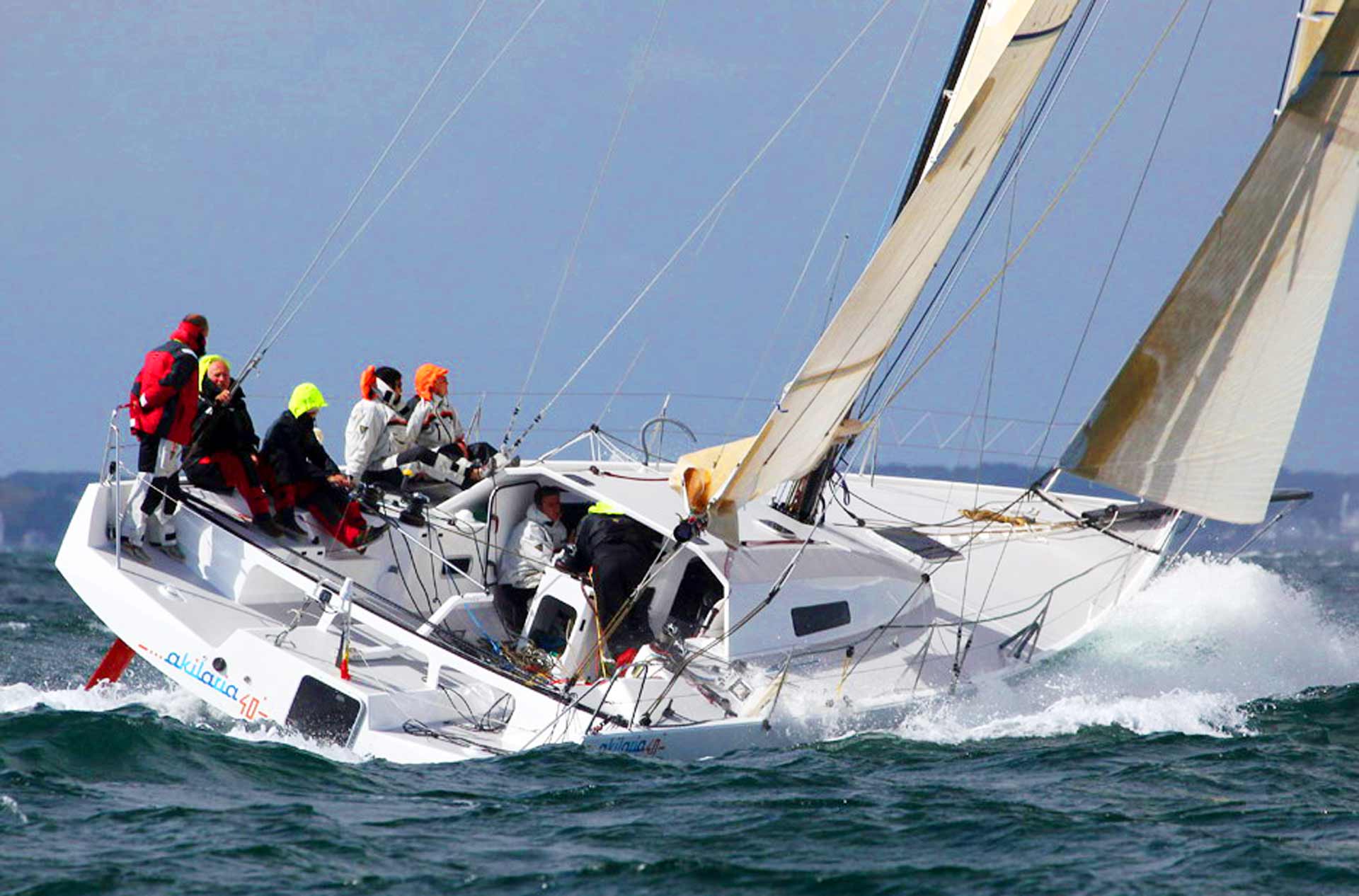
Competition is tight and there are a handful of yacht designers and brands offering their ships to both professional and Corinthian sailors. I talked to Merfyn Owen of Owen Clarke Design, Marc Lombard on behalf of the well-known Akilaria Class 40-boats and Britton Ward of renown Farr Yacht Design Bureau in the States on their Kiwi 40 FC-designs.
“We felt we could design a better boat than Pogo Structures.”
I first asked the three designers when and why their design bureaus entered the Class 40 competition.
Marc Lombard: “We first started to design Akilaria Class 40 boats in the year 2005. This was after the creation of the Class Box Rule and Pogo Structures did sell a lot of Pogo 40/1. We felt, we would be able to design and build a lighter boat with a better shape within that rule by keeping it simple to build on a production basis in the same way. First Akilaria hit the waters in 2006 and this RC1-version has been built 22 times in total. From 2009 we did 12 boats of the RC2 and starting in 2012 we are now having our fifth Akilaria RC3 launched. We are currently on a more “proto development”, which one could call the RC4.”
Merfyn Owen: “Our first Owen Clarke Class 40 was launched in 2005 as well. The last of our designs was launched in 2014 with boat number 17. The first of our fifth generation Class 40 racer design is build in South Africa and boat eighteen been ordered already.”
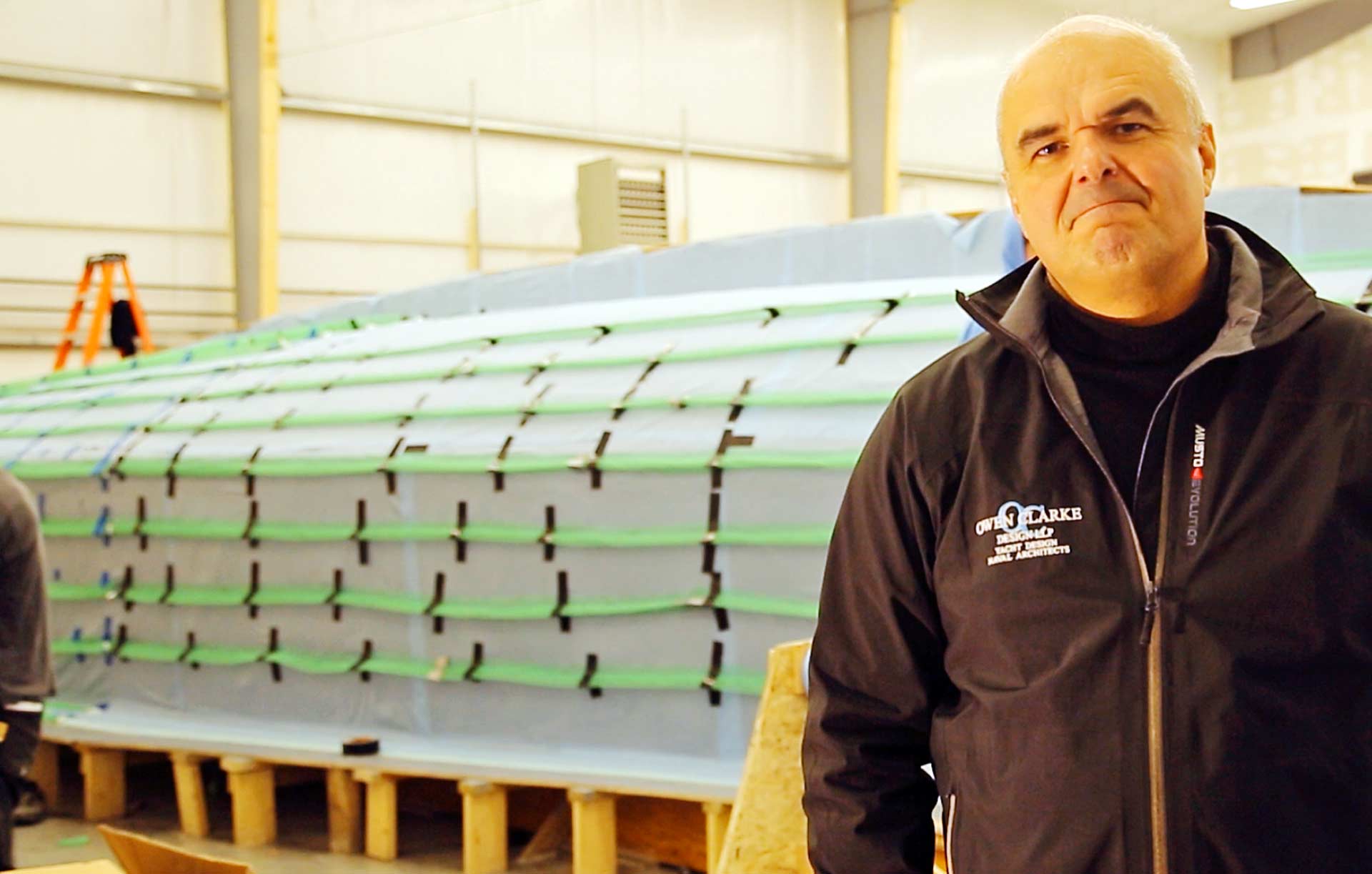
Britton Ward: “In 2009 the class was a rapidly expanding market area and one in which we felt our design capabilities and history were well suited. We began by developing a range of concepts and in October 2009 we contracted with Lapo Ancillotti´s BTBoats of New Zealand to develop a new limited production Class 40 design with the first boat finally launched in August 2010 built by Cookson Boats. The second boat followed in May 2011 and the third Kiwi 40FC was constructed by Hakes Marine in Wellington, launched in January 2012.”
“Corinthians racing alongside Professionals, that´s still one of the great things of the Class 40”
NO FRILLS SAILING.com: “Thanks again, Gentlemen, to spend some time answering my questions. Let´s begin by exploring how and why you three decided to have Class 40 designs produced. What´s the fuzz about the Class Rule and the boats all about? What´s so exciting from your point of view?”
Merfyn Owen/Owen Clarke Design: “This class has been the largest offshore racing class in the world for many years now partly because the rules are stable – with only well considered changes. From the beginning the rules were written to keep a cap on cost and although over the years the boats have become more highly developed and are no longer the racer-cruisers the class began with, limits on construction materials, sail inventory and appendages have kept these boats affordable. Personally I liked very much the fact that it allows Professionals as well as Corinthian sailors to race alongside each other in local and famous international regattas.”

Britton Ward/Kiwi 40 FC: “From its inception the Class 40 rule has sought to promote fast, high performance offshore-capable boats that are well-suited to short-hand-sailing. This is the result of a relatively strict and stable set of rule controls that try to limit build costs and produce equitable performance between different boats. From my point of view, the final ingredient is indeed a diverse calendar of events covering the spectrum between inshore crewed racing, coastal short distance sprints, classic offshore races and trans-atlantics. Many of the boats have completed circumnavigation and we might see another Global Ocean Race for the Class 40´s before too long.”
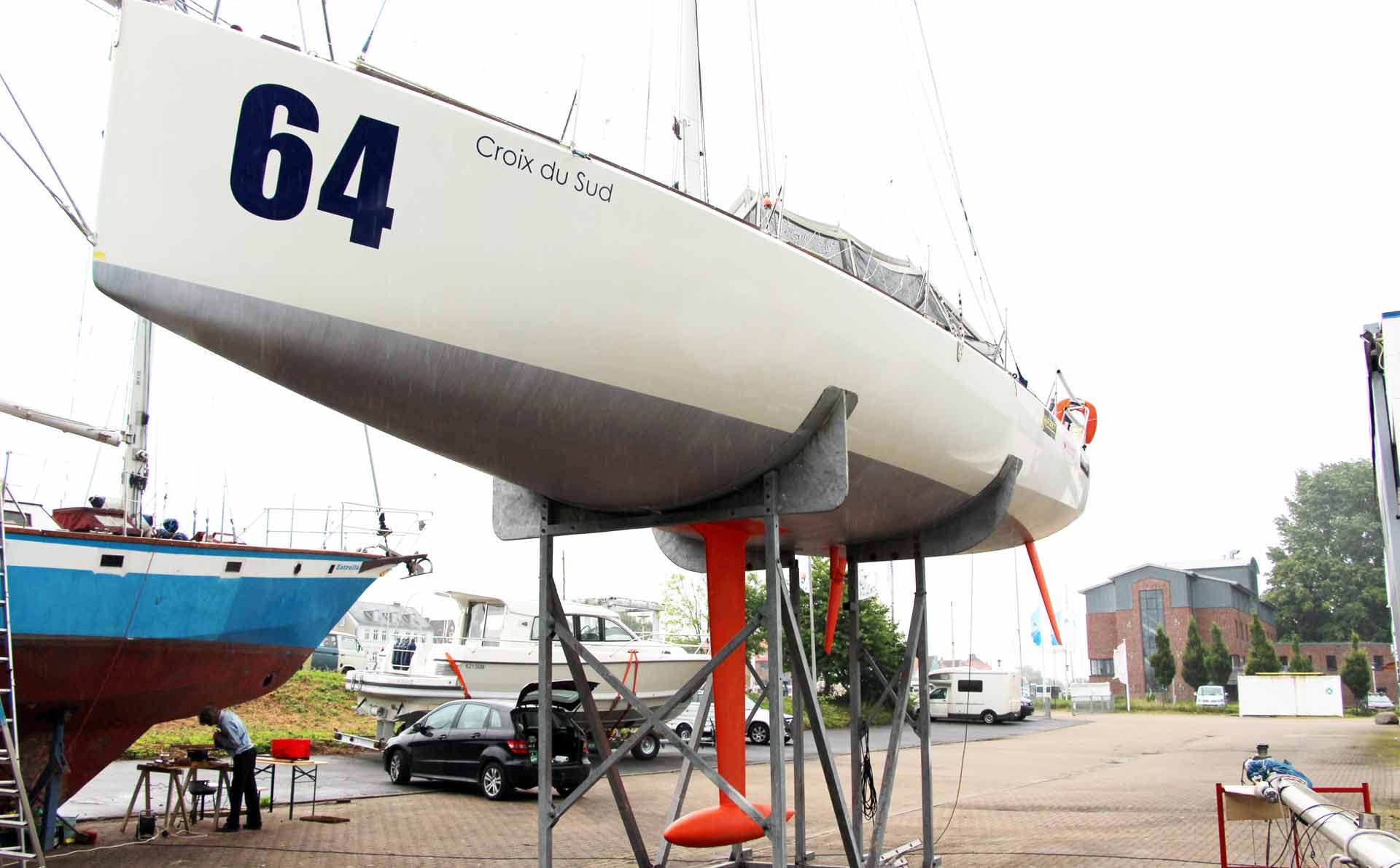
Marc Lombard/Akilaria: “I agree. The great thing with the rule is that by measuring available righting moment and limiting the sailplan area it was possible to design a “production boat” available to a broad number of demanding owners involved in ocean racing. This boat would last a while not being downgraded totally if ne prototypes where to come on the market. I would also agree that the success has come with all the very strong races, partially mixed with IMOCA 60 events attracting many sailors. More than 30 sailors get usually registered in many transat races just on Class 40´s! But on the other hand, what has been true for many years due to the success and more and more professionals entering the game there´s a necessity of constant innovation and progress. The Top 10 of them will always find tricks to have a better machine.”
The Big Name amongst Class 40 Yachts: Akilaria
NFS.com: “Marc, Akilaria is a well know name in Class 40 racing. As you have told us, there´s currently the RC3 third generation of the boat available. Tell us more about the main characteristics of Akilarias and the major developments from iteration to iteration. What´s so special about the RC3?”
Marc Lombard: “With the Akilaria RC1 we tried to build the boats at the minimum allowed weight and at the maximum righting moment. This happened to be “not so easy” with a production boat as you might imagine. But we finally designed a very good hull shape with plenty of available power upwind and very strong oceangoing capabilities in terms of seaworthiness all round. Later, on the RC2 we went for a more optimized construction: A more “regatta dedicated” boat with less freeboard, an optimized sheer line to the rule. On RC2 we also introduced a new optimized keel profile, the option of having lifting rudders in the design, which was also some gain in the total drag in certain sailing conditions. We also went for a more “racy” interior that was totally dedicated to racing, skipping comfort for cruising.”
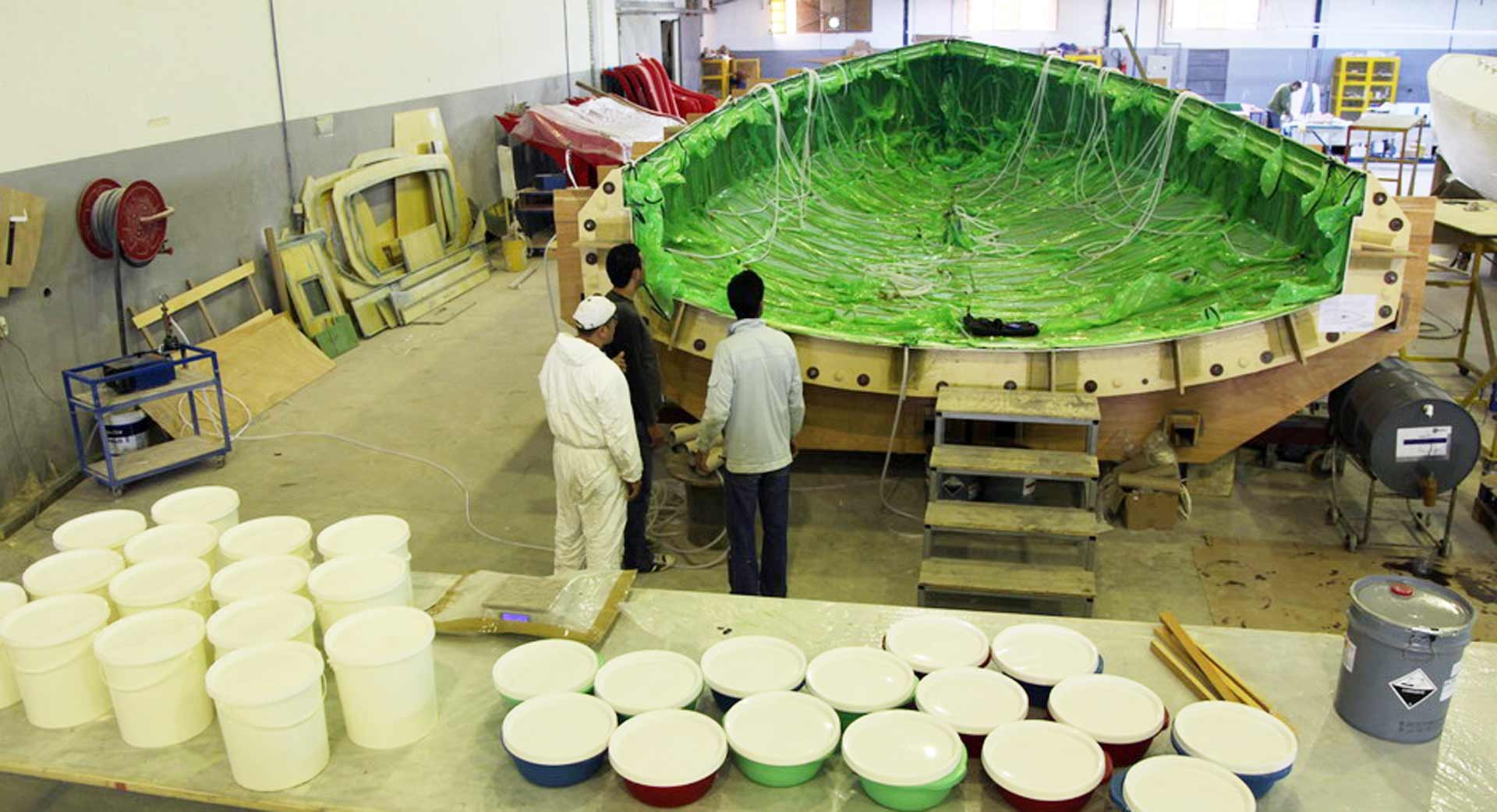
Marc Lombard: “With the RC3 third generation Akilaria we opted for a completely new design, a new hull with more volume of the forward underbody. That was improving the boat for upwind and reaching conditions, we added slightly more freeboard which in fact was again closer to RC1-design which was so seaworthy. Also, lifting rudders again was offered as an option, but overall the RC3 offers a much more comfortable deck plan, totally dedicated to single and double crew sailing with very good protection and ease of maneuvering. Last not least, a very optimized sailplan came through as a necessity, as the class became more professional. What´s special about RC3? It is very close to real prototype design, built as “one off”, with similar performances, but with a price that stays within the “production boats”-range. To make it clear, this is a boat that can be sailed with a budget of around 350.000 euros – compared to the latest “one off protos” where budget is closer to double of that price.”
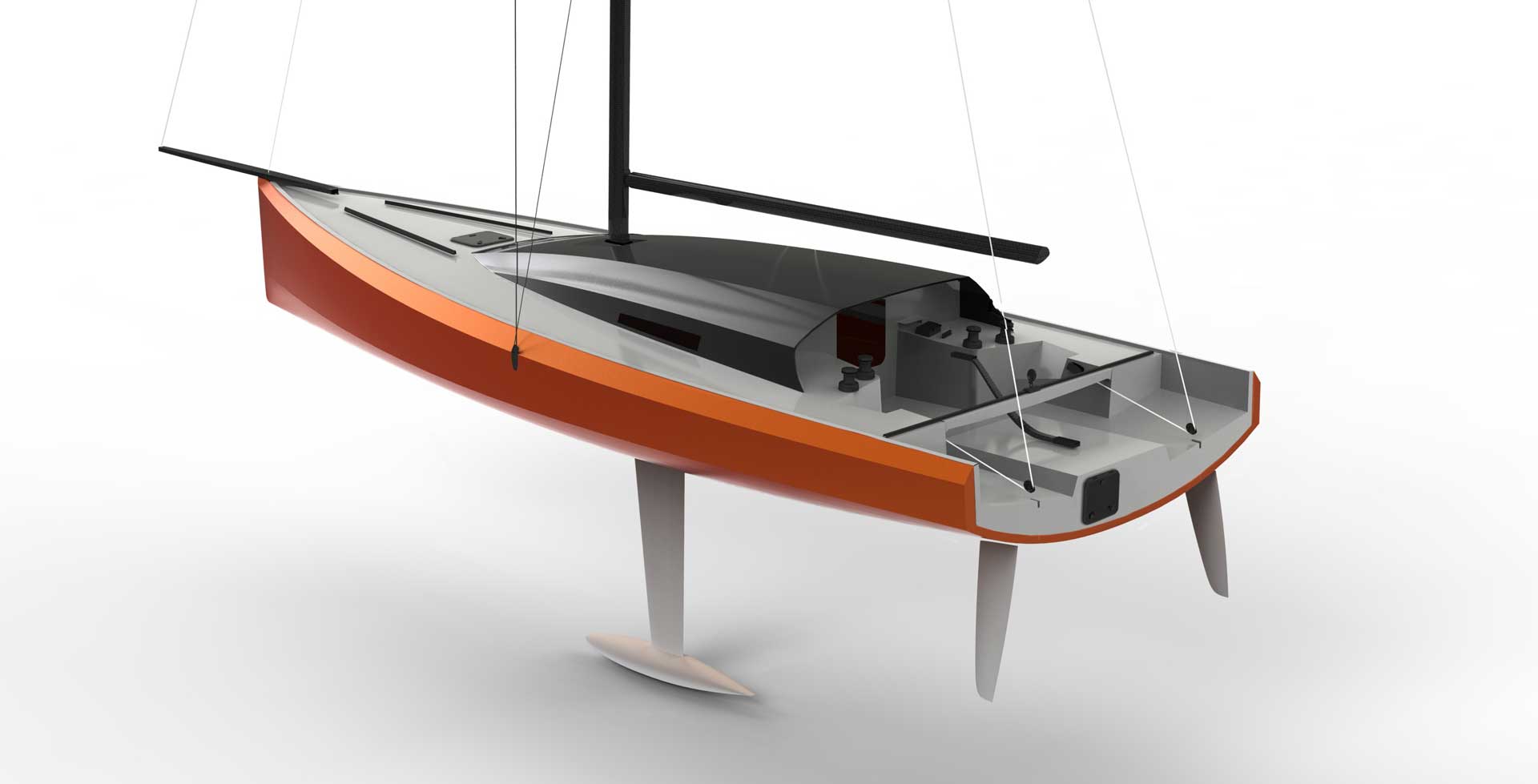
Marc Lombard: “Most exciting features of an Akilaria? RC1 and RC2 I would say are very, very strong seaworthy boats. The RC3 has a very good “all round performance” but with high points up and downwind. The very latest protos can be slightly faster on a reach, but overall the RC3 still performs very well. Strength of the construction is constantly improving and the boats are sailed increasingly harder. As a logical result few boats have encountered problems. For example, when the sailors keep all the speed upwind in very rough weather, facing huge waves. But as a general statement, boats are designed to withstand more loads that what is required in classification society and CE regulation. Much stronger than regular production cruisers.”
Close Competition and Highly Praised Boats: Owen Clarke Design Class 40
NFS.com: “Merfyn, your brand is well known in the class and elsewhere to being able to produce highly capable racing designs. I personally was able to roam about on two of your Class 40 boats and was impressed by the impression these yachts made in terms of rigidity and sturdiness of the design. What´s characterizing an Owen Clarke Class 40 boat?”
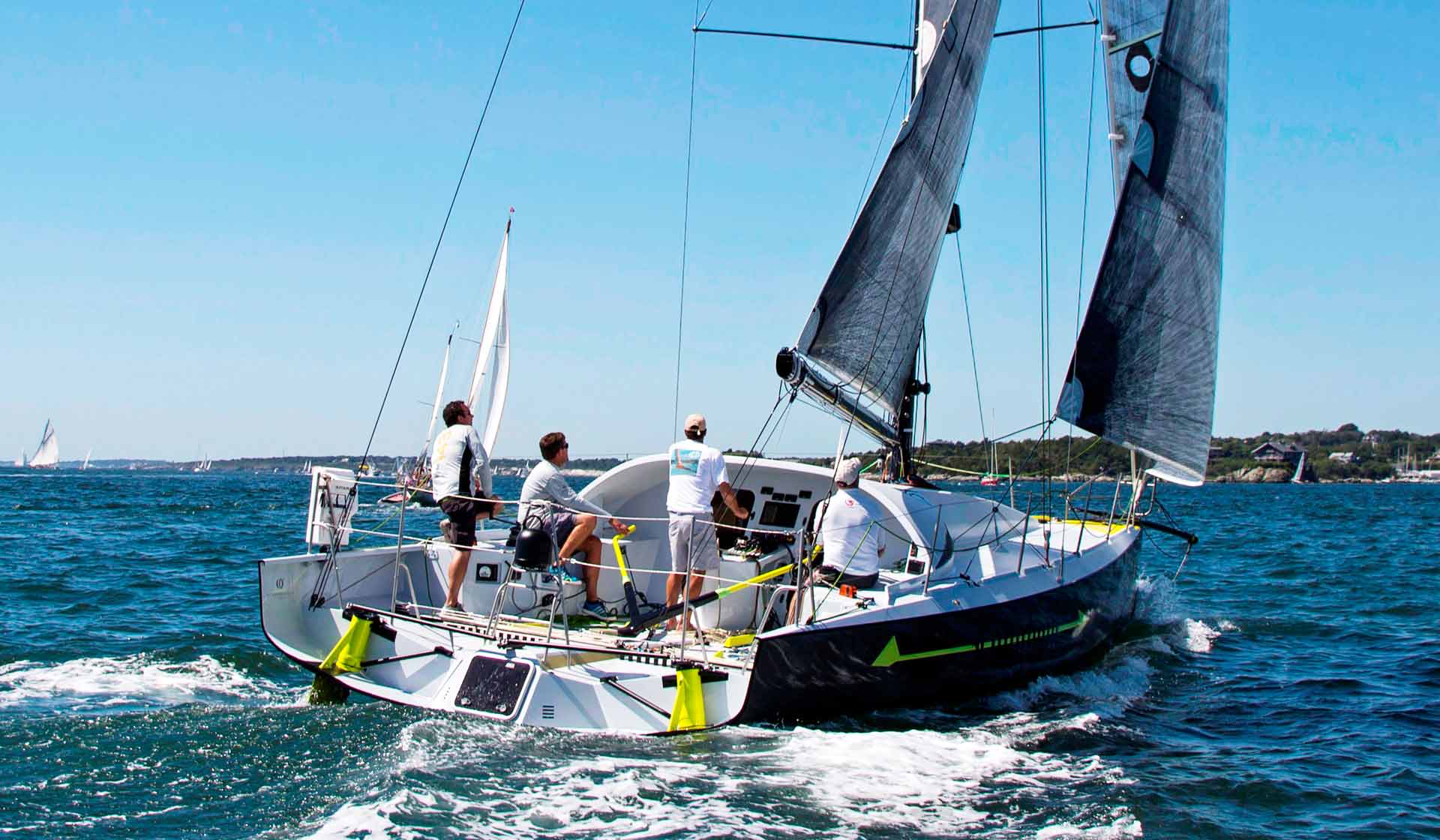
Merfyn Owen: “Race winning potential of course has to be a given for any race boat. Feedback has always been however that our boats are very well balanced, easily driven and very fast/easy to handle in big seas. Reliability has been a feature of the class, with relatively few serious incidents given the millions of miles the boats have sailed so far. A number of Owen Clarke boats have now completed well over 50.000 miles and in the ten years our boats have been racing we’ve had only one dismasting, which has been the most serious incident to date. So in short, I think our boats are known to be fast, reliable and with very good handling characteristics. Our boats have all been polyvalent designs. That means, they are not optimized for any one condition.”
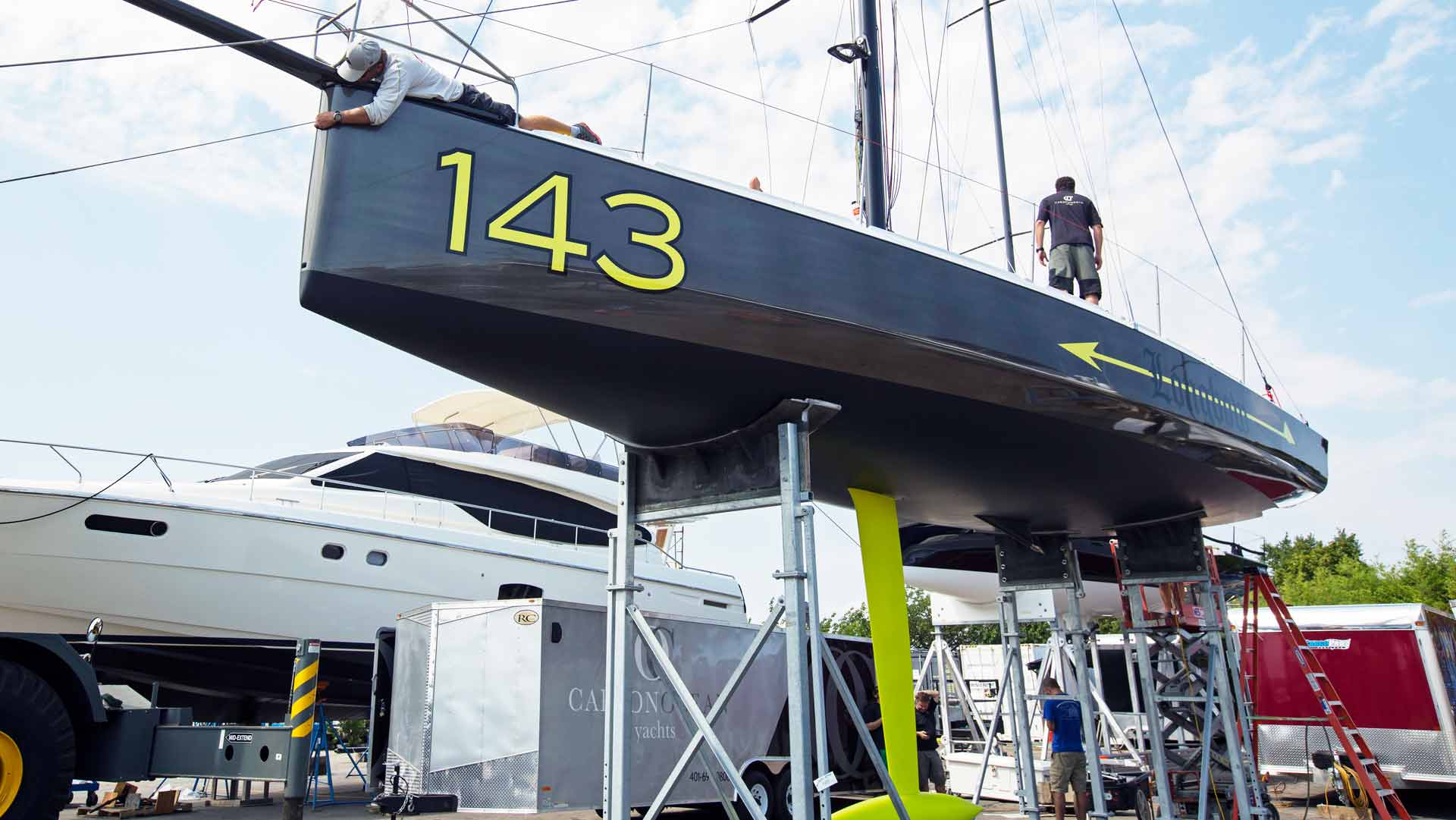
Merfyn Owen: “As we’ve never had a professional race team involved on our 40´s our boats have been designed for owners to win on a variety of courses, not just optimized for one transatlantic race every one or two years. Feedback from sailors have our boats as the best – or at least as quick as the quickest – in upwind and downwind VMG conditions. With the new crop of reaching orientated boats like the Mach 40 and Tyker 4 we’re addressing this to some extent with our new 5G design by winding up the dial in terms of reaching performance to some extent sacrificing some of the upwind and downwind advantage we’ve had in the past. The 5G remains however a polyvalent design in conception.”
NFS.com: “How do you improve the design?”
Merfyn Owen: “We are constantly learning from the sailors. Of course we do sail the boats a lot ourselves, so on the water experience is key. Also the rules change from time to time and new technology becomes available and is quickly introduced into the class. We also use weather databases and routing technology to optimize our boats for particular courses or events when this is applicable. For example, most recently Boat #143 LONGBOW was the first Class 40 to be optimized for races on the east coast of the United States.”
Smallest Fleet, Huge Brand: Farr Design´s Kiwi 40FC
NFS.com: “Though United States-based Farr Design Bureau is one of the world´s leading yacht design capacities, the Kiwi FC40 hasn´t entered the circus in large numbers yet. What are the Kiwi´s main characteristics and will make her easily distinguishable from other designs?”
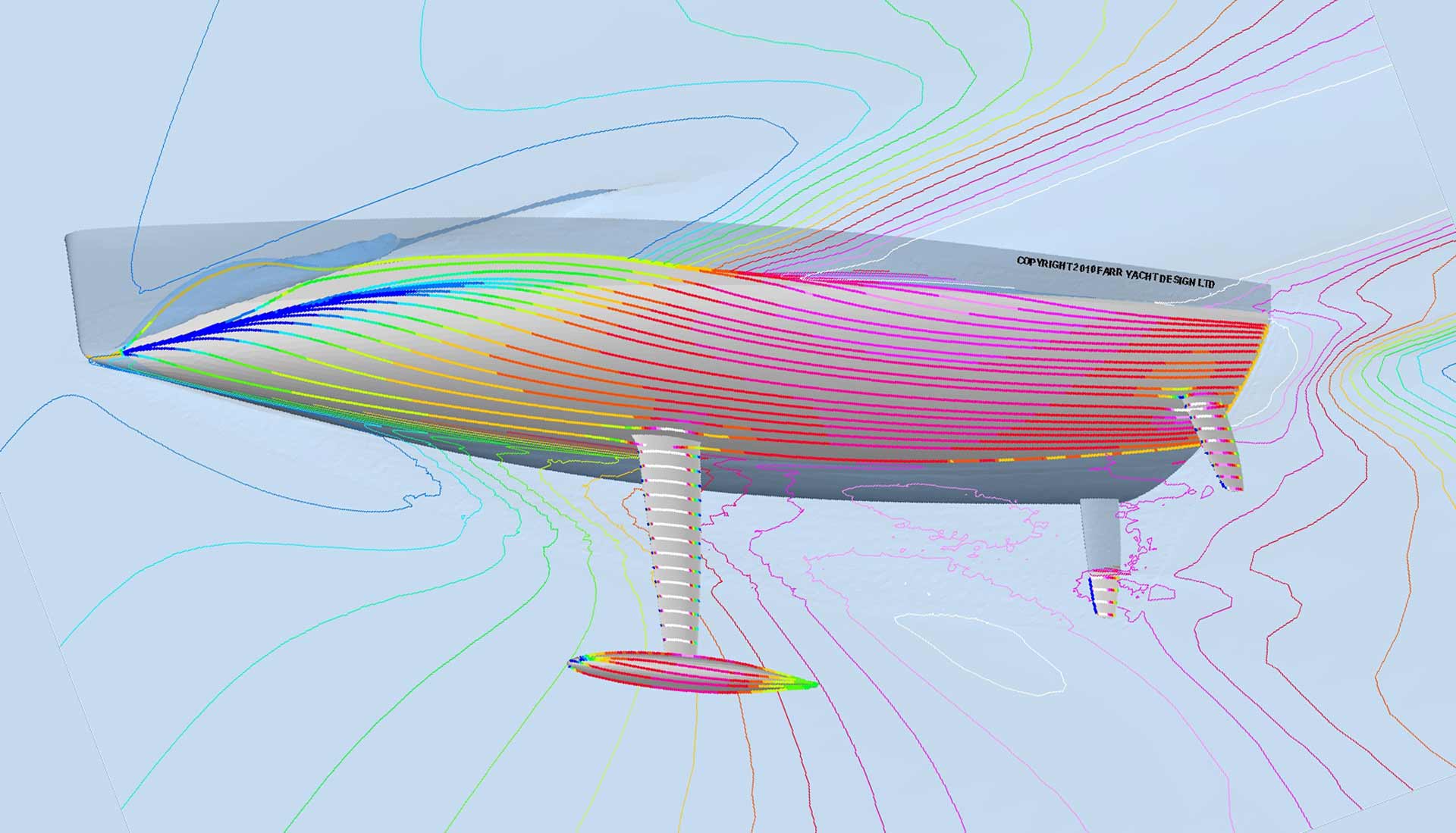
Britton Ward: “The Kiwi 40FC was one of the first Class 40’s to benefit from a comprehensive research program including extensive CFD simulation. The resulting hull shape has a number of signature features that are now seen in all the latest generation of other boats too. The boat features a pronounced, almost full length chine with very evenly radiused sections below to minimize wetted surface and provide a hull with a very even and consistent heel response in drag and helm load. The transom immersion levels and chine placement were carefully tuned relative to expected heel angles and water ballast weight additions to avoid excessive drag in light airs but maximize effective length when sailing at heel and speed. A lot of focus was placed in developing a hull that would achieve a dynamic bow up attitude when sailing at heel and speed so we see an LCB of the hull that is reasonably aft, and an aft placed keel and rig. In effort to maximize effective length forward and provide dynamic lift the Kiwi 40FC features a full stem and waterline ending – something now commonplace on new Class 40 and IMOCA 60 designs.”
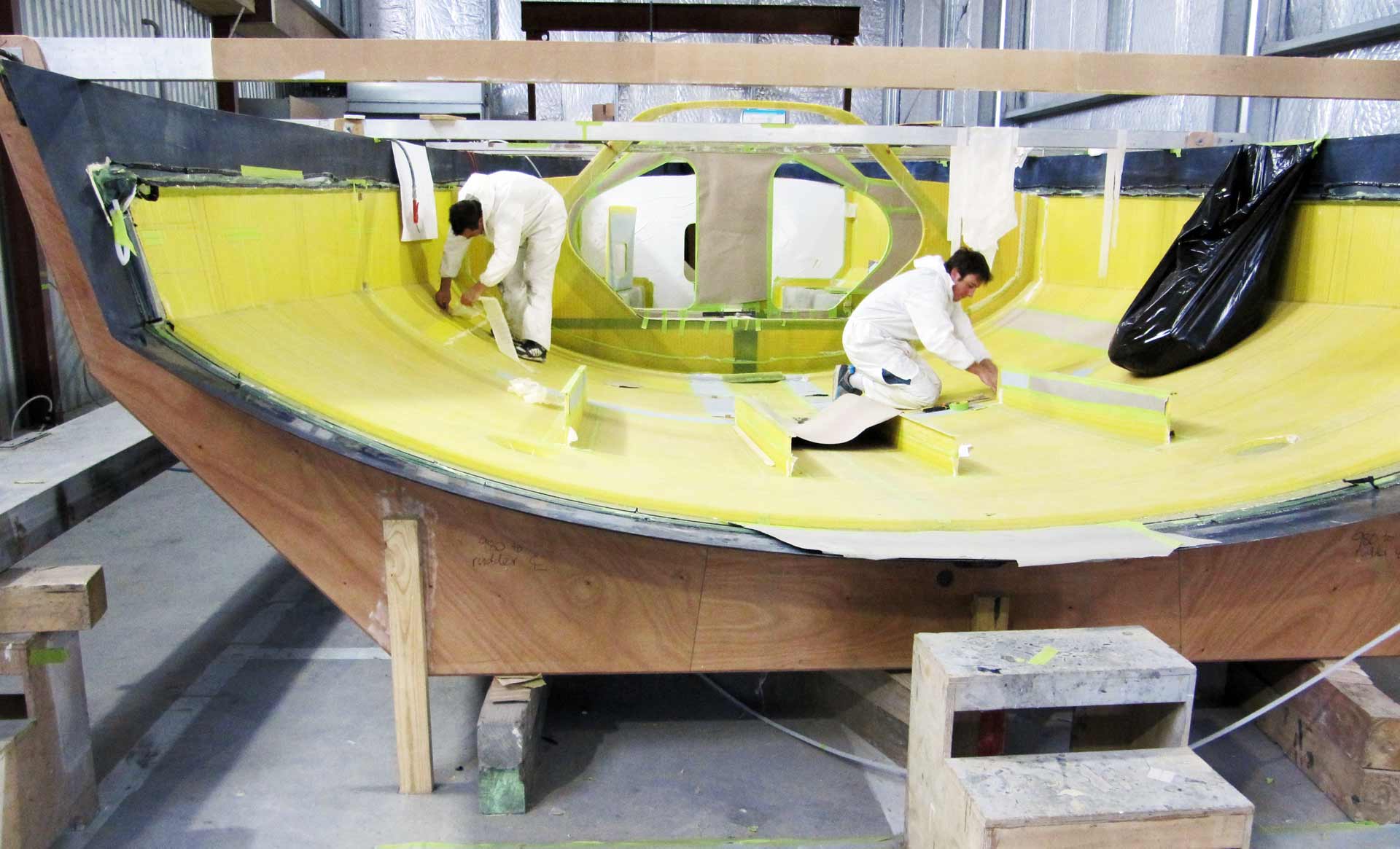
Britton Ward: “What our boats makes special is the fact, that unlike many of the latest designs that have been focused exclusively on distance races, the Kiwi 40FC was developed from its inception as a dual purpose boat – suitable for small crewed inshore racing and offshore singlehanded racing. This required some compromises and allowance for design options and keel changes to re-mode the boat for different purposes. To this day the Kiwi 40FC is regarded as having perhaps the best all-around performance on different points of sail. Kiwi 40FC´s have completed circumnavigations and competed in multiple Fastnet races, transat races, US Atlantic Cups and many other races where podium places have been achieved. To date we have had no reports of any significant damage.”
On the Owners of Class 40 Racing Yachts.
NFS.com: “Who is buying these boats?”
Marc Lombard: “Our customers are sailors who want super sensations of ocean racing without a need of huge sponsors – but on a highly competitive boat.”
Merfyn Owen: “In terms of owners we have a wide spread of nationalities, although we’ve never had a new boat built for a French client. Our new boat clients have been American, British, Scandinavian, German to name a few. Used boats have gone on to be purchased by South Africans, Australasian and – at last – French too.”
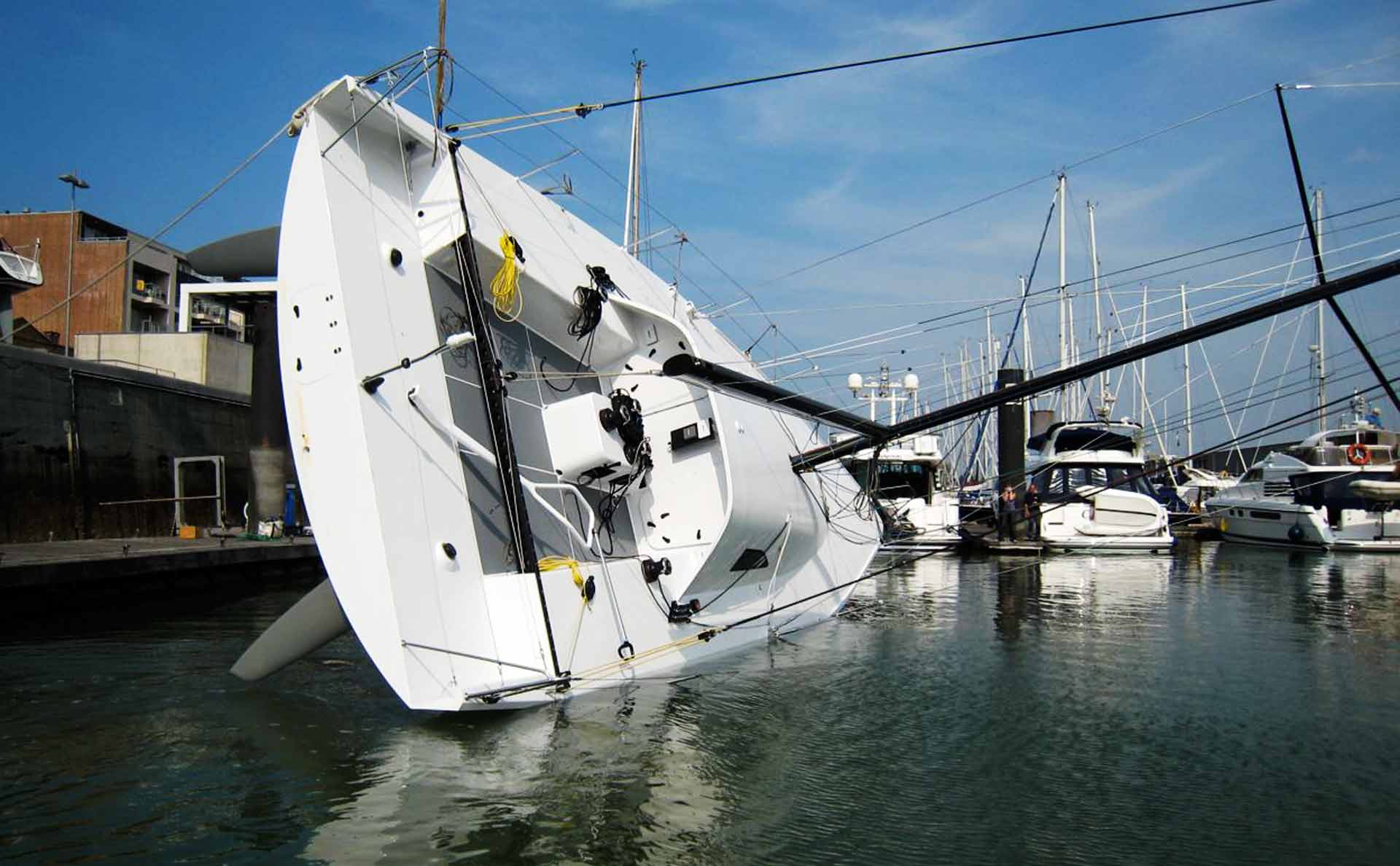
Britton Ward: “Kiwi 40 FC boats were originally bought by private owners with a broad range of experience levels and intended racing programs. All three of our boats are still being raced competitively”
On Improvement of Class 40 Racing Yachts & The Future of the Class
NFS.com: “Where would you say is most room for improvements for your respective boats and the Class 40 in general? Are there any follow-ups of your current designs hitting the waters anytime soon and what can be expected from the Class 40 in – let´s say – five years?”
Britton Ward: “Over the intervening years we have continued to monitor the performance and developments in the Class 40-fleet and feel there is still a lot of room for innovation and development. We have advanced concepts for a new generation of Class 40’s with further hull refinements and alternate deck and interior arrangements and are continuing discussions with potential partners with the hope of bringing a new generation of Farr Class 40s to the market place in the future. What about the future? Offshore yacht design is advancing rapidly with continued improvements in construction methodologies. The continued evolution of canting keels and the advent of dynamic stability foil systems has also advanced. How many of these technologies are permitted in the Class 40 is a question the Class will have to continually wrestle with. One of the reasons for the class’s success to-date has been its adherence to cost-restriction and its accessibility to both Corinthian and Professional sailors. If the class stays true to these principles then I expect the Class 40 typeform to evolve gradually with top performance being achieved by those teams that combine the best sailing with excellent design, refined sails and top quality construction.”
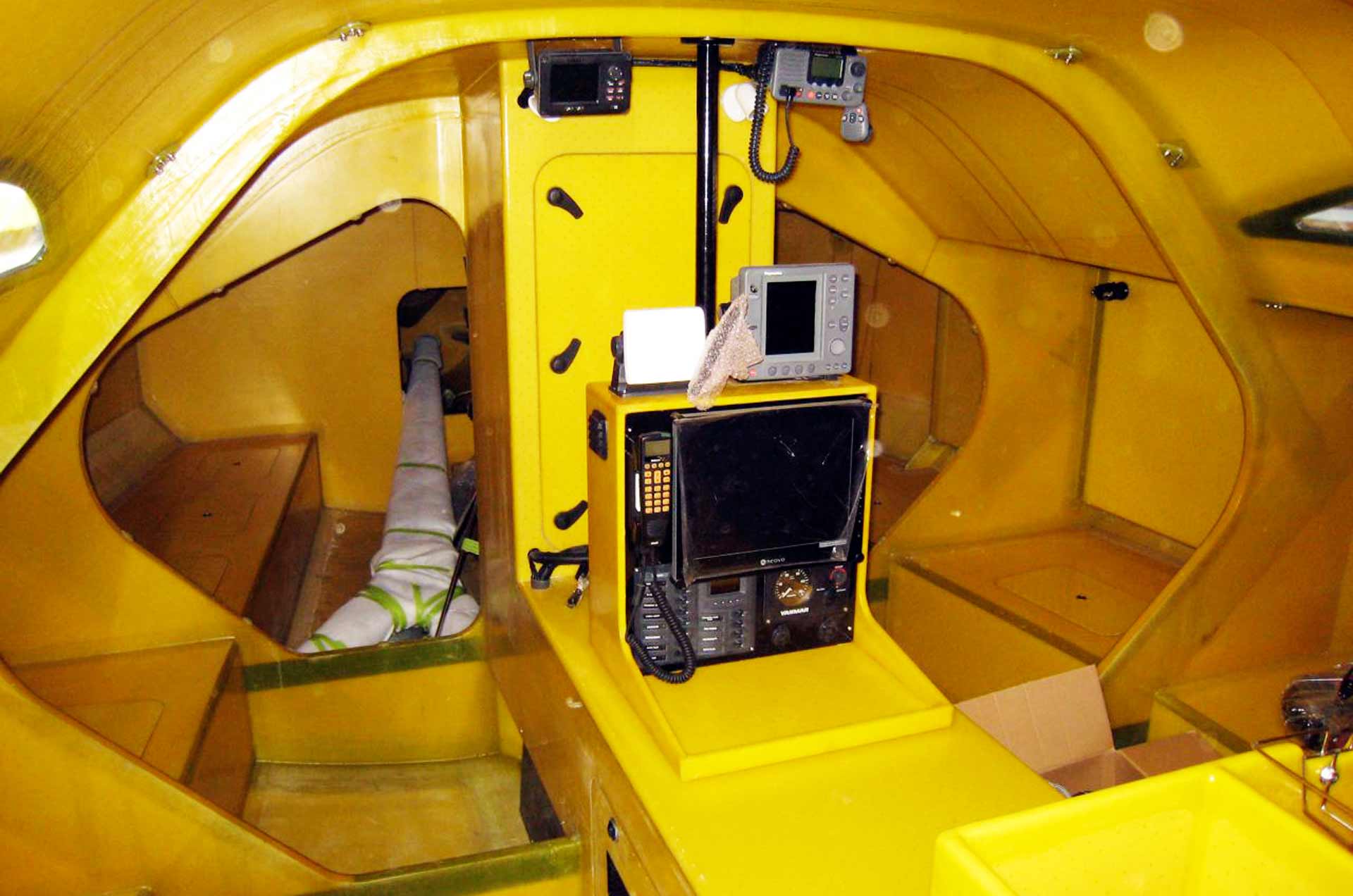
Merfyn Owen: “Providing the rule remains stable it will be a progressive change in the boats nothing radical. You may not even see a great physical difference and for sure some of the boats that exist now will still be on the podium in five years time.“
Marc Lombard: “We are working on an Akilaria RC4 right now, but from my point of view, evolution of the class leads to the fact that we will probably build less and less boats of the same model. This will make the boats become much more expensive, unless something is really done to limit the sailing budgets. Boats are improving all the time, but if you ask me, if nothing serious is done about limiting the budgets adapting the class rules, we could see less than ten boats on a future starting line. For sure, we are at a crucial timing about future development. As on Classe Mini 650 creating or limiting the entry to boats having a minimum of production could maybe a solution. That´s a difficult problem I would say. The class needs progress to be attractive, thus there´s a necessity of new designs, but in the same time we need “not to progress too fast” to stay within reasonable budgeting limits.”
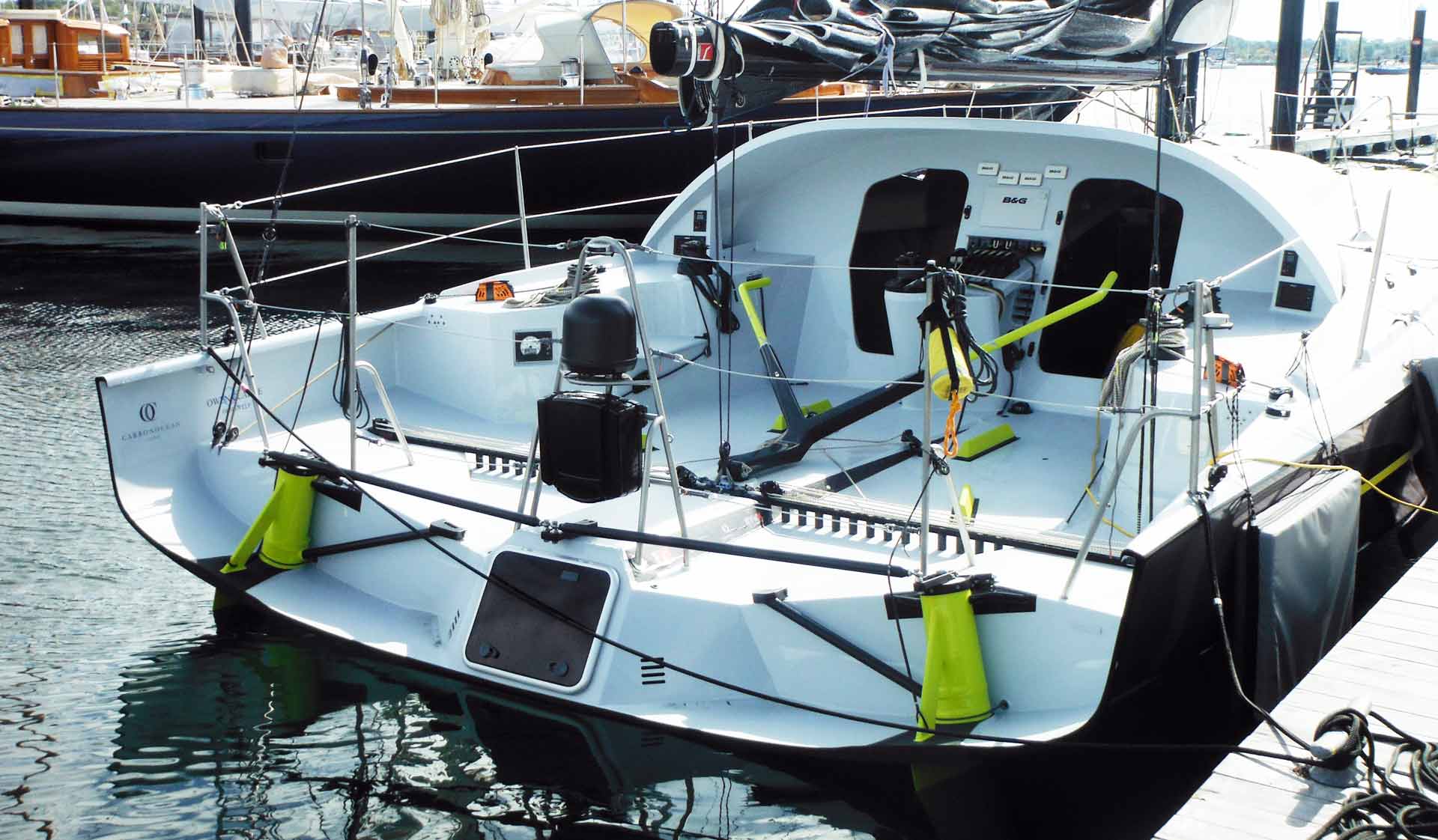
NFS.com: “Gentlemen, thank you very much for providing some answers on Class 40 and giving an intimate insight in your respective boats, constructions and points of view.”
This is how I´ve experienced my very first sailing with a Class 40 racing yacht
Another interview with Yacht Designer Marc Lombard on his legendary Figaro 2 racing yacht
British young professional Lizzy Foreman on IMOCA 60-sailing
